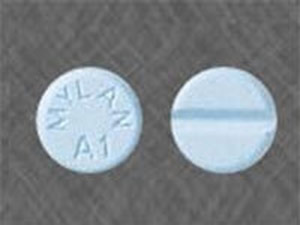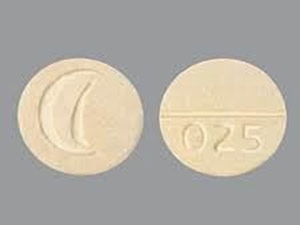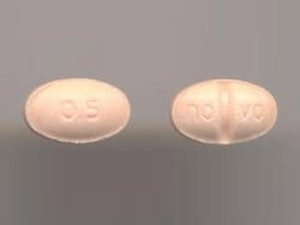Showing all 4 results
-

Alprazolam 1mg
$309.00 Read more -

Alprazolam 0.25mg
$299.00 Read more -

Alprazolam 0.5mg
$299.00 Read more -

Alprazolam 2mg
$319.00 Read more
What is the use of Alprazolam
Alprazolam is a short-acting benzodiazepine sold under the brand name Xanax. It is a controlled substance (Schedule IV) under the CSA (Controlled Substance Act) 1970. The US government approved alprazolam for medical use in 1981. Alprazolam is available as a generic medication and also under the name Xanax. It is one of the most prescribed psychiatric drugs in America, with more than 20 million prescriptions per year.
Buy alprazolam online in available forms: immediate-release orally disintegrating tablets, extended-release tablets, and oral solution. In regular release form it is available as 0.25mg, 0.50mg, 1mg, and 2mg tablets, while as extended-release formulation it is available as 0.50mg, 1mg,2mg, and 3mg tablets. Its oral solutions are available in the strength of 0.5mg/5ml and 1mg/10ml solutions.
Alprazolam is a fast-acting drug with potent effectiveness. However, it has a risk of addiction and abuse. If used with certain other medications, it also has a danger of life-threatening conditions. Drinking alcohol or taking street drugs increases the chances of fatal side effects.
Alprazolam tablet uses
Order Alprazolam Online legally to treat generalized anxiety disorder, panic disorder, short term transitory symptoms of anxiety, and anxiety associated with depression.
Generalized anxiety disorder is unrealistic or outrageous anxiety or worry about life circumstances for more than six months in which these symptoms occur: Motor tension such as trembling, feeling shaky, twitching, aches, muscle tension, restlessness, or soreness, Autonomic hyperactivity such as shortness of breath, palpitations, dry mouth, cold or clammy skin, dry mouth, frequent urination, nausea, diarrhea, lump in the throat, or abdominal distress, and Vigilance & Scanning such as feeling edged, difficulty concentrating, exaggerated response, irritability, or sleep disorder.
Panic disorder is unexpected repeated panic attacks following the symptoms such as accelerated heart rate, palpitations, pounding heart, trembling or shaking, sweating, smothering or shortness of breath, choking, chest pain, abdominal distress, dizziness, lightheadedness, faintness, feelings of unreality, fear of losing control, chills or hot flushes, or fear of dying.
Apart from the above conditions, alprazolam is also helpful in treating depression, fear of open spaces or agoraphobia, and premenstrual syndrome.
Alprazolam side effects
Most frequent and less severe side effects of alprazolam include:
- Headache
- Drowsiness
- Dizziness
- Lightheadedness
- Tiredness
- Irritability
- Difficulty concentrating
- Dry mouth
- Nausea
- Constipation
- Change in appetite
- Change in sex drive
- Increased salivation
- Weight gain or loss
- Aches in joints
- Difficulty urinating
Alprazolam may also cause some severe side effects such as:
- Seizure
- Severe skin rashes
- Shortness of breath
- Hallucinations
- The yellowness of eyes or skin
- Memory impairment
- Confusion
- Depression
- Slurred speech
- Unusual mood changes
- Behavioral changes
- Suicidal thoughts or attempts
- Loss of balance or coordination
Alprazolam dosage
Alprazolam is a controlled substance having the dangers of dependence, addiction, and abuse. Doctors should personalize the dosage for each patient according to the seriousness of the condition and other significant factors. Cautiously titrate dosages to avoid adverse effects.
For patients of anxiety disorder or short term symptoms of anxiety, initiate the dose with 0.25-0.50mg alprazolam given three times a day, as needed. Increase the doses to get maximum beneficial effects, at an interval of three to four days. A maximum daily dose of alprazolam is 4mg for the patients of anxiety disorder.
For the treatment of a panic disorder, initiate dose with 0.50mg given three times a day. Increase the dosage at an interval of three to four days, depending upon the response of the patient. However, the average daily dose for patients of panic disorder is higher than an anxiety disorder. Panic disorder patients can take up to 6-7mg of alprazolam per day, as needed in divided doses. A maximum of 10mg alprazolam is recommendable for treating panic disorder.
Always initiate the therapy at low to prevent the risk of side effects. Slowly increase the dosage to achieve a maximum therapeutic response. Doctors should periodically reassess the patients taking more than 4mg alprazolam per day.
Avoid abrupt discontinuation of treatment to prevent symptoms of withdrawal. When needed to discontinue, gradually taper the doses as directed by a doctor.
Precautions
Follow the below precautions before taking alprazolam:
Inform the doctor if you have a hypersensitivity to alprazolam, any other benzodiazepine, or any inactive ingredients of the medication. For the list of inactive ingredients present in the medicine, please refer to the box of medicine.
A doctor will not recommend you to take alprazolam if you are taking itraconazole (Onmel, Sporanox) or ketoconazole (Nizoral).
Consult a doctor about all the other concurrent medications you are taking, such as nutritional supplements, vitamins, prescription and non-prescription drugs, and any herbal products.
A doctor may not prescribe alprazolam to you if you have glaucoma.
Tell the doctor your complete medical history, if you ever had depression, suicidal thoughts, seizures, lung, liver or kidney diseases, and alcohol or substance abuse.
Consult a doctor if you are pregnant or a nursing mother. Alprazolam can adversely affect the fetus or breastfeeding infant.
Never take alprazolam with alcohol or any central nervous system depressant; it can increase the risk of adverse effects such as severe drowsiness and impaired alertness, leading to many serious conditions.
